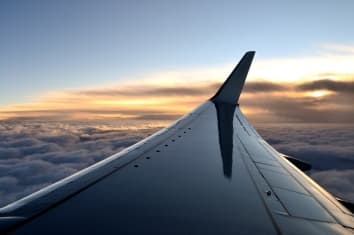Flies Follow A More Efficient Route To Double Up Its Speed Than Flights
Although, being a part of CrazyEngineers Editorial Team I feel no shame to accept that I am afraid of wasps and <a href="https://www.crazyengineers.com/threads/emulating-bee-like-movement-could-hold-the-key-to-next-generation-autonomous-robots.88587">Emulating Bee-Like Movement Could Hold The Key To Next Generation Autonomous Robots</a>, I am sure there are many people who love them for their unmatched aesthetic skills and nimble movements. In laymen terms, they might be just wonderful natural creations worth appraisal but to a team of biomechanics/mathematics enthusiasts aka researchers from NYU those tiny creatures are worth a million dollar.
According to assistant professor Leif Ristroph, at NYU’s Courant Institute of Mathematical Sciences, even with the world’s finest craftsmanship and experienced pilots, modern airplanes lack the agility required to sport the efficiency experienced in flying insects. Why does this happen? He further explained, it happens because natural insects do not follow the aerodynamic concept, based upon which the complete foundation of aircraft structures and modules have been prepared.

It has been noticed that even drag or wind resistance also behaves in a peculiar manner when it comes to the flying insects. To multiply the speed twice the present one, a standard flight requires to scale up its thrust by four-fold to counter the stronger wind resistance. Whereas in case of natural flying insects, the numeric value is divided by two ie. the thrust value is simply proportional to the amount of speed increased with a constant multiplied sporting a value 1.
The importance of drag was known from a very long time, it is the force of wind or air resistance that works in opposite to the motion of the object. Empirically, the relation could be formulated as, the wind resistance increases as the square of the speed resulting in a 2X speed in expense of the thrust value multiplied to 4.
To match their speculation with the practical result the team devised robotic wing instrument to measure motions, flows, and forces that ultimately followed the theory. The authors’ team believe that if the flying style is reproduced for the new generation#-Link-Snipped-#, the systems could be more efficient. The complete research was published in the Physical Review Fluids journal.
Source: #-Link-Snipped-#
According to assistant professor Leif Ristroph, at NYU’s Courant Institute of Mathematical Sciences, even with the world’s finest craftsmanship and experienced pilots, modern airplanes lack the agility required to sport the efficiency experienced in flying insects. Why does this happen? He further explained, it happens because natural insects do not follow the aerodynamic concept, based upon which the complete foundation of aircraft structures and modules have been prepared.

It has been noticed that even drag or wind resistance also behaves in a peculiar manner when it comes to the flying insects. To multiply the speed twice the present one, a standard flight requires to scale up its thrust by four-fold to counter the stronger wind resistance. Whereas in case of natural flying insects, the numeric value is divided by two ie. the thrust value is simply proportional to the amount of speed increased with a constant multiplied sporting a value 1.
The importance of drag was known from a very long time, it is the force of wind or air resistance that works in opposite to the motion of the object. Empirically, the relation could be formulated as, the wind resistance increases as the square of the speed resulting in a 2X speed in expense of the thrust value multiplied to 4.
To match their speculation with the practical result the team devised robotic wing instrument to measure motions, flows, and forces that ultimately followed the theory. The authors’ team believe that if the flying style is reproduced for the new generation#-Link-Snipped-#, the systems could be more efficient. The complete research was published in the Physical Review Fluids journal.
Source: #-Link-Snipped-#
0
